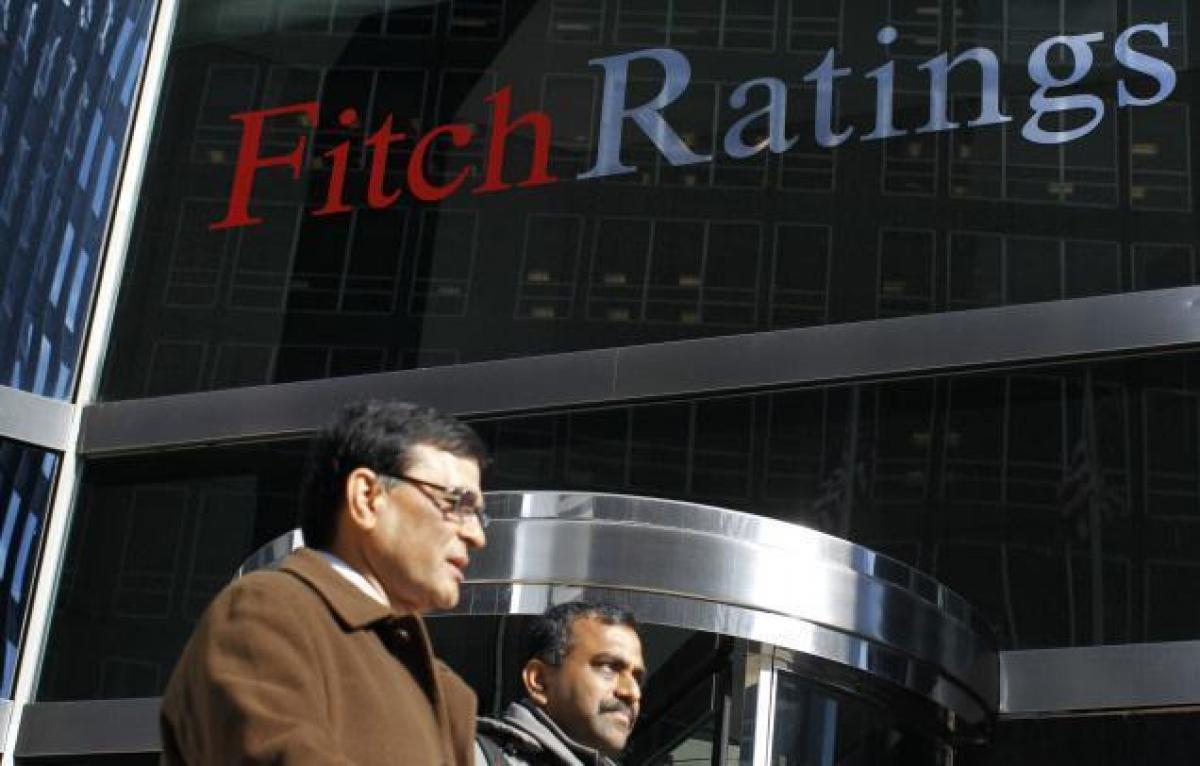Live
- MLA Sri Ganesh Distributes Cheques to Kalyana Lakshmi beneficiaries
- AP health minister highlights need for awareness over generic medicines
- SC restores evidence-tampering case against former Kerala Minister Antony Raju in 'underwear' matter
- Apple’s $100 Million Bid to Reverse iPhone 16 Ban in Indonesia
- 'When BCCI want things to happen, they get their way': Finch on IPL auction dates
- Revolutionizing Customer Service: Enhancing Customer Experience through OneConnect Project and SAP Service Cloud
- Delhi govt to implement work from home for 50 pc govt staff amid severe air pollution
- Annual addition to green energy capacity likely to surpass 35 GW: Report
- Seeking to complete 1st nuclear power plant as scheduled: Egyptian PM Madbouly
- Priyanka Chopra shares heartwarming moment of Malti enjoying Autumn
Just In
Fitch: India Bank Credit Profiles at Risk Under Heavy Losses


The credit profiles of India\'s public sector banks are under pressure as heavy losses reported in the last two consecutive quarters weaken their core capital adequacy, says Fitch Ratings.
The credit profiles of India's public sector banks are under pressure as heavy losses reported in the last two consecutive quarters weaken their core capital adequacy, says Fitch Ratings. An inability to strengthen capital in a timely manner could have a potentially negative impact on the banks' ability to achieve balance-sheet stability, pursue credit growth and defend market share in the long term.
Core capital ratios for many public-sector banks are close to or below the Basel III financial year 2019 (FY19) minimum regulatory requirement of 8%, and the sector is unlikely to build capital through internal capital generation in light of the dim earnings outlook - at least over the next two years due to the ongoing provisioning pressure. The cumulative 2HFY16 losses at Indian public-sector banks were more than double the government's capital injection in FY16, and had eroded nearly 15% of capital as of FYE15. This has heightened the sector's need for additional external capital.
We are likely to reassess our USD140bn estimated capital need for the system under Basel III, of which public-sector banks will continue to account for the dominant share. Recent steps by India's central bank to allow part of the revaluation reserves into core equity has helped counter some of the pressure, but is not enough - keeping in mind the higher capital requirements.
There are few options for private-sector capital for now. Public-sector banks' access to capital markets is likely to remain weak. There is little additional Tier 1 capital issuance either (around USD500m since January). The government remains the most important source of new capital for the sector. The sector's requirement for new capital needs to be addressed to meaningfully kick-start credit growth to lend support to the economy.
Fitch has long assessed India's banking system on a stressed-asset basis - rather than narrowly defined NPLs - to factor in the risks of significant under-provisioning and weak capital. The recent losses at public-sector banks support this approach.
The central bank's asset-quality review is a positive, as it has compelled banks to reclassify standard or performing restructured loans as NPLs, leading to higher loan provisioning which triggered losses at many public banks. Small- and mid-sized public-sector banks were always the most at risk, but these results indicate that the standalone ratings of certain large banks may also be vulnerable.
The review also highlights the higher capital risks for government banks with an average net NPL to equity ratio at around 70% versus 8% at private banks. The impact on private-sector banks was relatively limited, as hidden problem loans were lesser from the start - while better credit growth and diversified income streams also helped offset the decline in profit from higher loan provisions.
NPL ratios have now become more representative of the actual asset-quality stress, but the suddenness and significant rise in 2HFY16 provisioning highlights how long it has taken to address public banks' poor balance sheets.
India's new Insolvency and Bankruptcy Code may significantly improve resolution timeframes if implementation is both timely and effective. The government's intention is encouraging, according to recent press reports, but it will take time to see whether the new code can help resolve the current NPL stock, especially since the broader economy remains relatively uncertain. The Reserve Bank of India's recent discussion paper on limiting banking sector exposure to individual corporate borrowers, when implemented, could further reduce systemic risk by limiting concentration risk to large corporates.

© 2024 Hyderabad Media House Limited/The Hans India. All rights reserved. Powered by hocalwire.com






